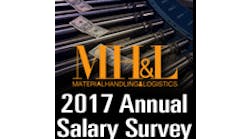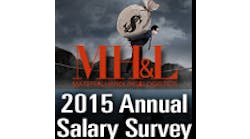Awareness of and demand for asset visibility via an “Internet of Things” is on the rise, according to a survey commissioned earlier this year by Zebra Technologies and performed by Forrester Consulting. The results, based on an online survey of 646 global enterprise IT decision-makers, were predicated on an understanding of the following definition of the IoT:
‘‘Smart interconnected devices that businesses use to get more visibility into the identification, location, and condition of products, assets, transactions, or people to drive more effective and timely business decisions or to improve customer interactions.’’
The respondents represented companies in manufacturing; healthcare; oil, gas, and petroleum; retail and hospitality; transportation and logistics; and government. Key findings from this study include:
• Of the 64% of survey respondents who indicated they were familiar with the term ‘‘Internet of Things,’’ more than 70% have a positive perception of it.
• 72% of the enterprises represented indicated that barcodes are valuable to enabling IoT solutions; 71% say the same thing about real-time location tracking technologies like active RFID and 58% of firms consider passive RFID devices as valuable IoT solution technologies.
• While only 15% of surveyed enterprises already have an IoT solution in place, 53% are planning to implement IoT solutions within the next 24 months.
• Supply chain visibility, asset location, and transaction tracking are key applications. Most respondents indicated that supply chain visibility applications can help reduce working capital, improve fixed asset utilization, improve customer service and reduce the time to locate assets.
• Between 50% and 52% of surveyed enterprises believe that implementing IoT solutions is complex and expensive, and 66% identify the need for device manufacturers to help them realize the benefits of implementing IoT.
The study’s authors list the following recommendations:
• Develop a forum for listing and evaluating the risk and opportunity scenarios that are most relevant to your firm’s value proposition and competitors.
• For each high-priority scenario, develop a conceptual solution that describes your vision of a technology-agnostic or idealized capability to meet the requirement.
• It is highly unlikely that a single technology or a single vendor can supply all of the elements that an IoT solution might require, such as sensors or edge devices, integration with legacy applications and processes, analytics, alerts, and business process escalation. Determine which elements are required to develop effective solutions for your priorities.
Related Articles:
Make Reusable Assets Show Returnable Value
Tracking, Tracing and Transport Management Rank High in Cloud

